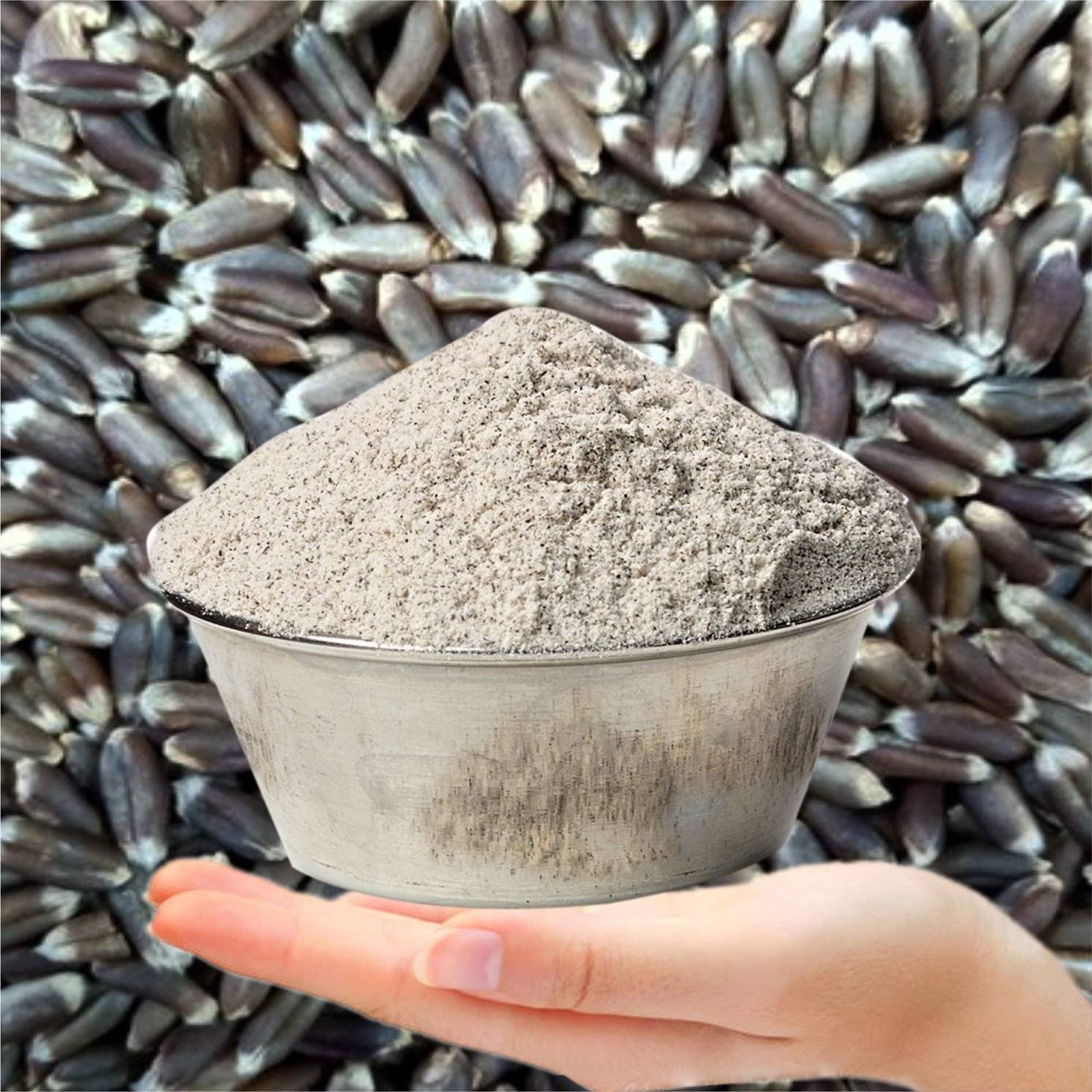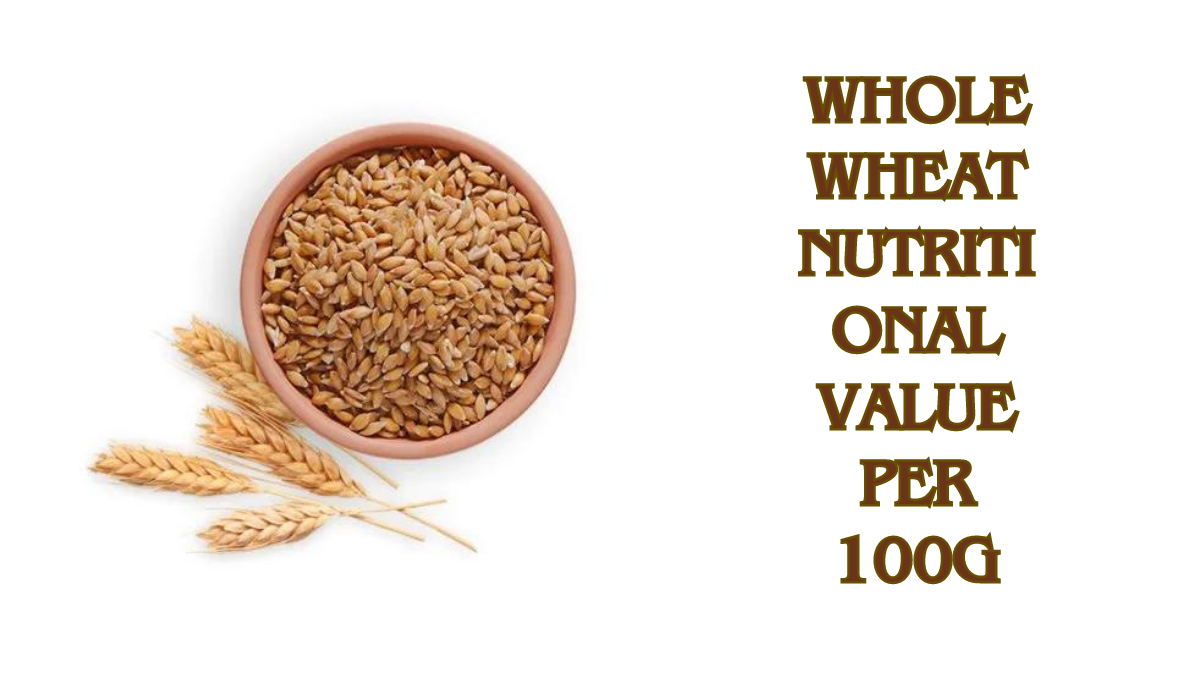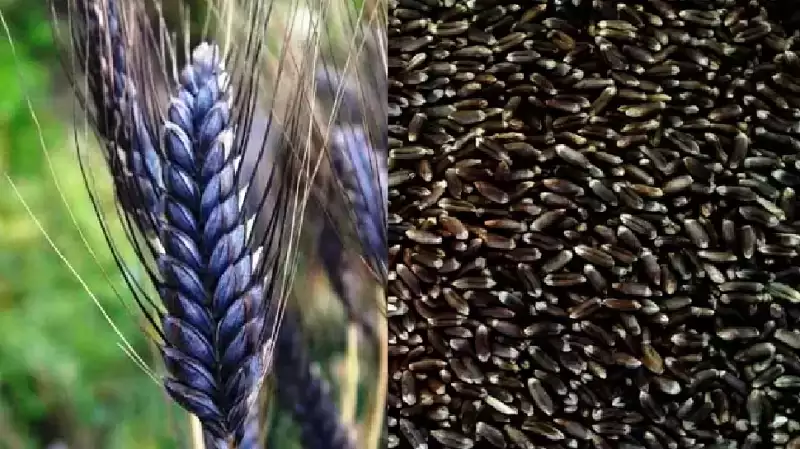Sprouted wheat flour is a type of flour crafted from wheat kernels that undergo a unique sprouting process. In this method, wheat berries are immersed in water, stimulating germination, after which they are dried and ground into flour. This distinguishes sprouted wheat flour from conventional wheat flour. Here are key aspects of sprouted wheat flour:
Sprouted wheat flour Benefits
Sprouted wheat flour is associated with several potential benefits due to the unique sprouting process that the wheat undergoes. The advantages of using sprouted wheat flour include:
- Increased Nutrient Availability:
- Sprouting is believed to result in elevated levels of B-vitamins such as folate, niacin, and B6.
- Vitamin C content may be enhanced through the sprouting process, along with an increase in antioxidants.
- Reduced Antinutrients:
- Phytic acid, an antinutrient, is known to decrease during sprouting, potentially improving the absorption of essential minerals like iron, zinc, and calcium.
- Enzyme inhibitors, which can hinder digestion and nutrient utilization, are broken down during sprouting.
- Improved Digestibility:
- The breakdown of complex carbohydrates and proteins during sprouting may contribute to increased digestibility, making sprouted wheat flour a favorable option for those with digestive sensitivities.
- Potential Blood Sugar Regulation:
- Sprouted grains may have a lower glycemic index, suggesting a potential benefit in regulating blood sugar levels.
- Gluten Tolerance:
- While sprouted wheat flour contains gluten, individuals with mild gluten sensitivities may experience improved tolerance to products made with sprouted wheat.
- Enhanced Enzyme Activity:
- Sprouting activates enzymes, potentially enhancing the breakdown of compounds and improving nutrient absorption.
- Improved Taste and Texture:
- Baked goods using sprouted wheat flour may feature a sweeter and nuttier flavor, along with a softer and lighter texture.
- Potential Allergen Reduction:
- The sprouting process may reduce the allergenic potential of wheat, making it potentially suitable for individuals with mild wheat allergies.
- Healthier Fats:
- Sprouting may lead to increased levels of healthy fats, including omega-3 fatty acids.
- Environmental Impact:
- Some proponents argue that sprouting grains may have environmental benefits, such as reduced water and energy usage during production.
Sprouted wheat flour Nutritional value
Sprouted wheat flour possesses a distinctive nutritional composition resulting from the sprouting process, which enhances certain nutritional aspects compared to traditional wheat flour. While the specific nutritional content can vary depending on factors such as wheat variety and processing methods, the following points provide a general overview of the nutritional value associated with sprouted wheat flour:
- Increased Nutrient Content:
- B Vitamins: Sprouting is known to elevate levels of B-vitamins, including folate, niacin, and B6, crucial for energy metabolism.
- Vitamin C: The sprouting process contributes to an increase in vitamin C, an antioxidant supporting immune function and skin health.
- Enzymes: Activation of enzymes during sprouting may aid in the digestion and absorption of nutrients.
- Minerals:
- Iron, Zinc, Calcium: Reduction of antinutrients like phytic acid during sprouting may enhance the bioavailability of essential minerals such as iron, zinc, and calcium.
- Fiber:
- Sprouted wheat flour typically retains dietary fiber, promoting digestive health and providing a sense of fullness.
- Protein:
- Sprouted wheat flour contains proteins, including gluten. Although the sprouting process may alter protein composition, it remains a source of essential amino acids.
- Fats:
- Sprouted grains may exhibit increased levels of certain healthy fats, such as omega-3 fatty acids.
- Carbohydrates:
- Sprouted wheat flour contains carbohydrates, serving as a primary energy source. The sprouting process may influence carbohydrate composition.
- Glycemic Index:
- Products made from sprouted wheat flour may have a lower glycemic index compared to their non-sprouted counterparts, potentially leading to a more gradual increase in blood sugar levels.
- Phytic Acid and Antinutrients:
- The sprouting process reduces levels of antinutrients like phytic acid, which can hinder mineral absorption.
It is essential to note that, despite the potential nutritional benefits, sprouted wheat flour still contains gluten. Individuals with celiac disease or severe gluten sensitivity should exercise caution and avoid products made with sprouted wheat. Additionally, variations in nutritional content may exist among different brands and products, emphasizing the importance of reading labels and understanding specific processing methods. For personalized dietary guidance, consulting with a healthcare professional or a registered dietitian is recommended.
Sprouted wheat flour 100g Nutritional value
The nutritional value of 100 grams of sprouted wheat flour can vary based on factors such as the specific brand, processing methods, and wheat variety. However, I can provide a general overview of the approximate nutritional content you might find in 100 grams of sprouted wheat flour:
Please note that these values are estimates and may vary:
- Calories: Approximately 340-380 kcal
- Protein: Around 15-20 grams
- Total Fat: Approximately 2-3 grams
- Saturated Fat: Less than 1 gram
- Monounsaturated Fat: About 0.5 grams
- Polyunsaturated Fat: About 1 gram
- Carbohydrates: Roughly 70-75 grams
- Dietary Fiber: Around 15-20 grams
- Sugars: Approximately 1-2 grams
- Vitamins and Minerals:
- B Vitamins (including folate, niacin, and B6)
- Vitamin C
- Iron, Zinc, Calcium, and other minerals
- Phytic Acid: Reduced compared to non-sprouted wheat flour, enhancing mineral absorption.
- Glycemic Index: Lower than non-sprouted wheat flour, contributing to a slower release of glucose into the bloodstream.
It’s important to check the nutritional information on the specific product you have, as values can vary based on the brand and processing techniques.
Sprouted wheat flour Glycemic index Per 100g
The glycemic index (GI) of wheat flour can vary depending on several factors, including the type of wheat, processing methods, and how it is prepared. Generally, sprouted wheat flour, refined wheat flour (white flour) have a lower glycemic index than whole wheat flour.
As a reference point, here are the approximate GI values for different types of wheat flour:
- Sprouted wheat flour: Sprouted wheat flour generally has a lower GI than refined wheat flour and whole wheat flour. It’s usually in the low range, around 15.
- Whole wheat flour: Whole wheat flour generally has a lower GI than refined wheat flour. This is usually in the moderate range, around 54-69.
- White wheat flour (refined): Refined wheat flour, which is commonly used in white bread and many baked goods, has a high GI. GI can range from about 70 to 85 or higher.
It is important to note that the glycemic index can be affected by a variety of factors, including the specific product, how it is prepared or cooked, and what it is consumed with. Mixing wheat flour with other foods or consuming it as part of a mixed meal may affect the overall glycemic response.
If you have special concerns about blood sugar levels or are suffering from a medical condition such as diabetes
Sprouted wheat flour glycemic index Per 100g
The glycemic load (GL) of wheat can vary based on factors such as the type of wheat product (Sprouted wheat flour, whole wheat flour, refined wheat flour), processing methods, and how it’s prepared. The glycemic load takes into account both the quality and quantity of carbohydrates in a standard serving size, usually 100 grams.
Here are approximate glycemic load values for different types of wheat flour products per 100 grams:
- Sprouted wheat flour: The glycemic load is generally in the low range, around 6.2 per 100 grams.
- Whole Wheat Flour: The glycemic load is generally in the moderate range, around 14-18 per 100 grams.
- White Wheat Flour (Refined): Refined wheat flour, commonly used in white bread and many baked goods, tends to have a higher glycemic load. The glycemic load can range from around 20 to 25 or higher per 100 grams.
It’s important to note that the glycemic load can be influenced by various factors, including the specific product, how it’s cooked or baked, and what it’s consumed with. Combining wheat products with other foods or consuming them as part of a mixed meal can affect the overall glycemic response.




